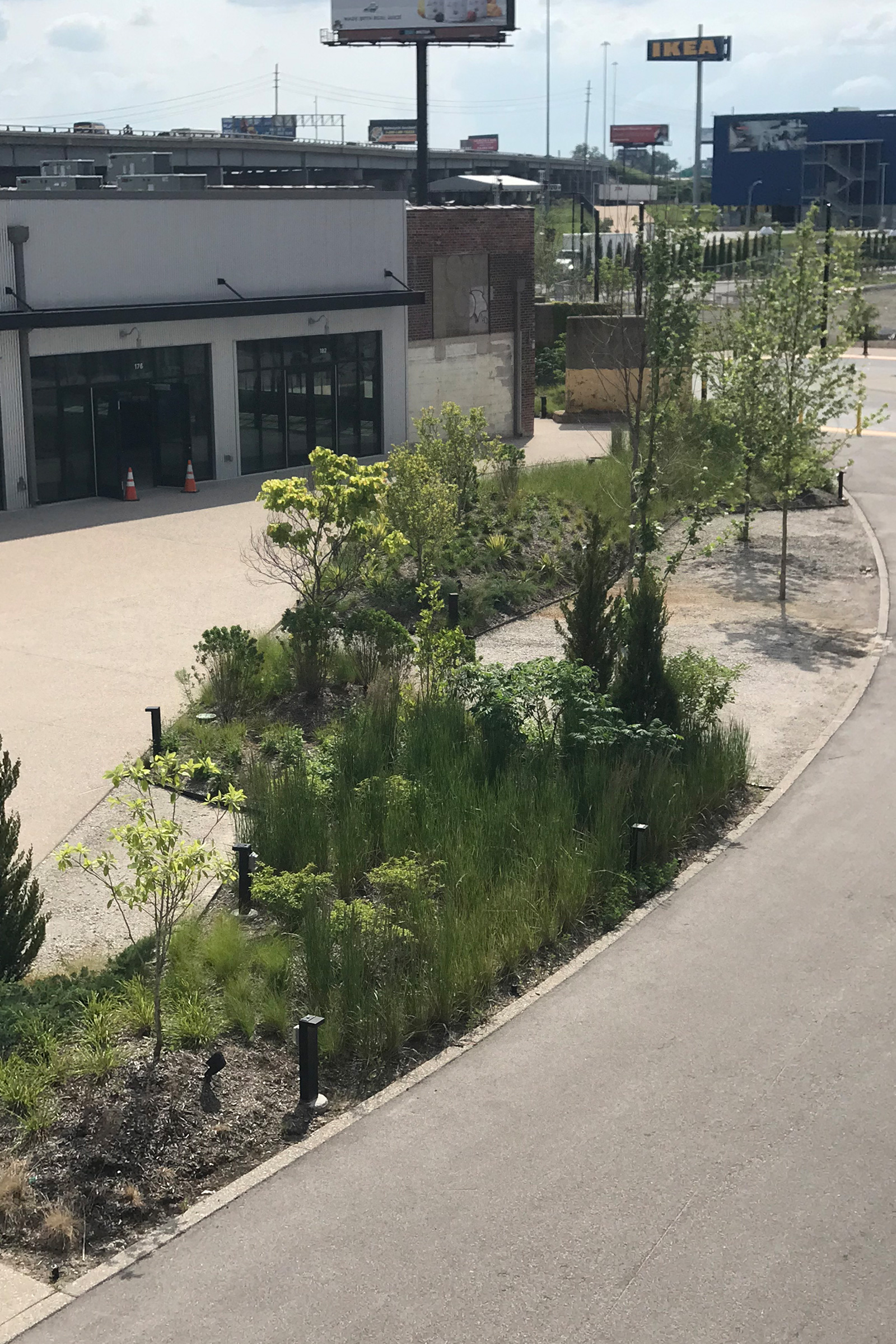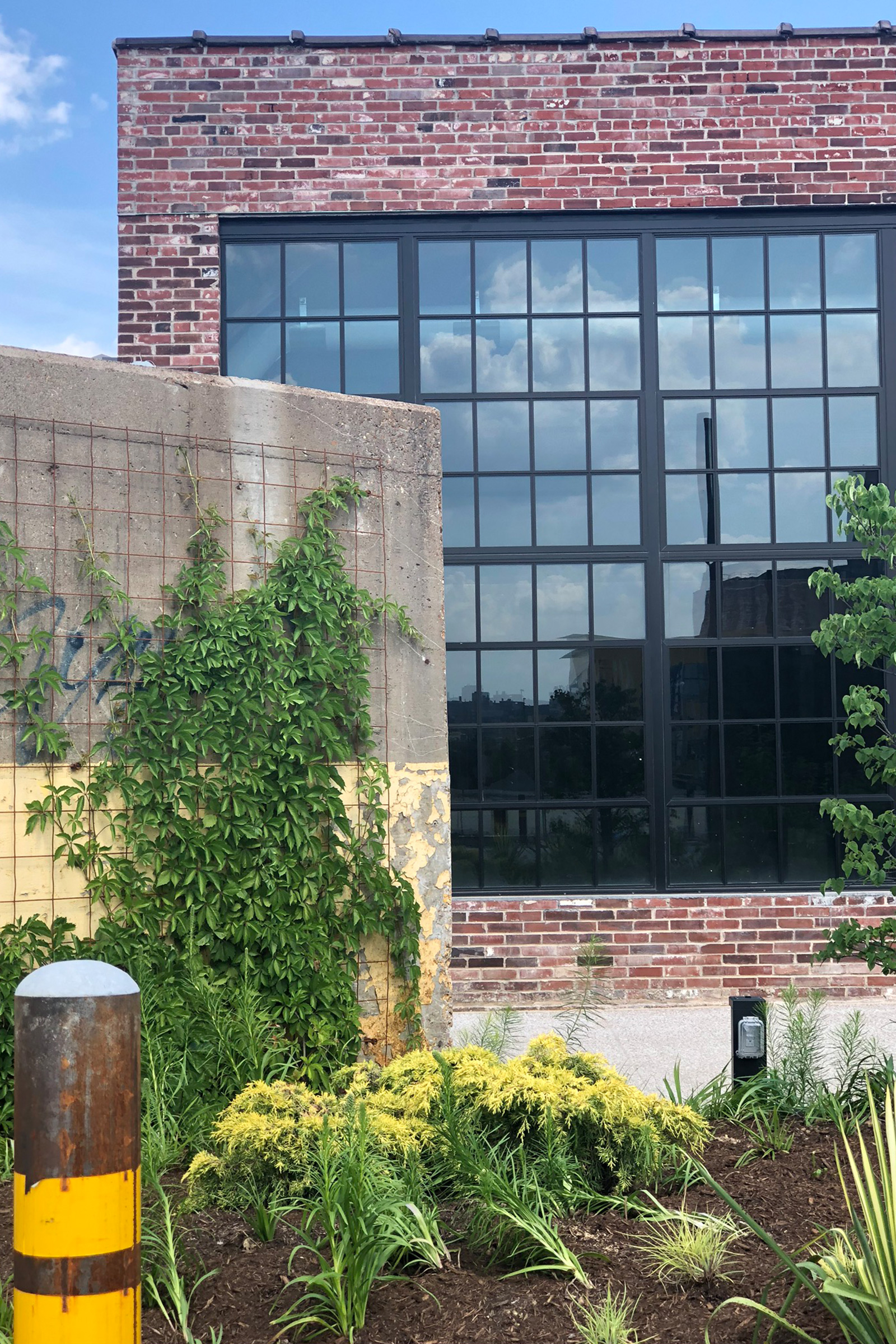Sustainable landscaping starts by using plants that are native to the area; they have numerous benefits and create a lasting impact on the ecosystem. Native plants have evolved and adapted to the area they are in for thousands of years and improve the surrounding environment.
For example, a plant palette of mostly native species was implemented at City Foundry STL. Here, a system of elaborate plant communities was established to highlight the site’s post-industrial history. A mixture of native shrubs, grasses, sedges, forbs and spring ephemerals was carefully prescribed to establish a groundplane of seasonal interest and texture that gives the site an orchestrated wild feel. A canopy of feature trees was used as well throughout the site.
Beyond providing a beautiful aesthetic for City Foundry, the use of native plants comes with several benefits:
1. Native plant species promote biodiversity and encourage good insects and pollinator species.
Monarch butterflies, bees and pollinator species are vital in keeping a thriving ecosystem. Not only are butterflies and bees vital, but the biodiversity of the habitat and host plants allow birds and insects a place to prey on undesirable species such as mosquitoes. The native plant species give a place for the good insects and pollinators to establish the plant ecosystem. Some non-native plants can also be harmful to the pollinators.

2. Reduced irrigation, fertilization, pesticide and maintenance demands.
When creating sustainable landscaping with native plant species, not only is the environment better for the insects and pollinators, there is also a reduced need for irrigation, fertilization, pesticides and maintenance. There are a variety of native plants in a natural landscaping environment that require little to no extra irrigation, in contrast to the traditional high water demand landscaping and grass lawns. Once the native plants are established, they typically hold up to pests well and crowd out unwanted weeds. There is also a reduced need for fertilizers and pesticides helping to keep our waterways clean, and reduce chemical input to our environment.
3. Native plants are well adapted to drought, flood, and other changing climate conditions.
Take a look at MSD’s Landscape Guide for Stormwater Best Management Practice Design which includes many native perennial, shrub and tree recommendations to be used in stormwater infrastructure. Unlike non-native plants, native plants have a deep root system that makes them more sustainable in features like rain gardens and bio-retention areas. Their deep root systems allow native plants to survive heavy rains and dry periods as well as reduce the maintenance required to maintain them.

4. A perennial plant palette will return year after year, reducing the cost of annuals and plant replacements.
This one is a no-brainer! Native shrubs, grasses, flowers and trees are adapted to our cold winter conditions and will go dormant before re-emerging in the spring to grow bigger and stronger each year.
